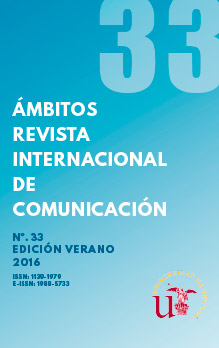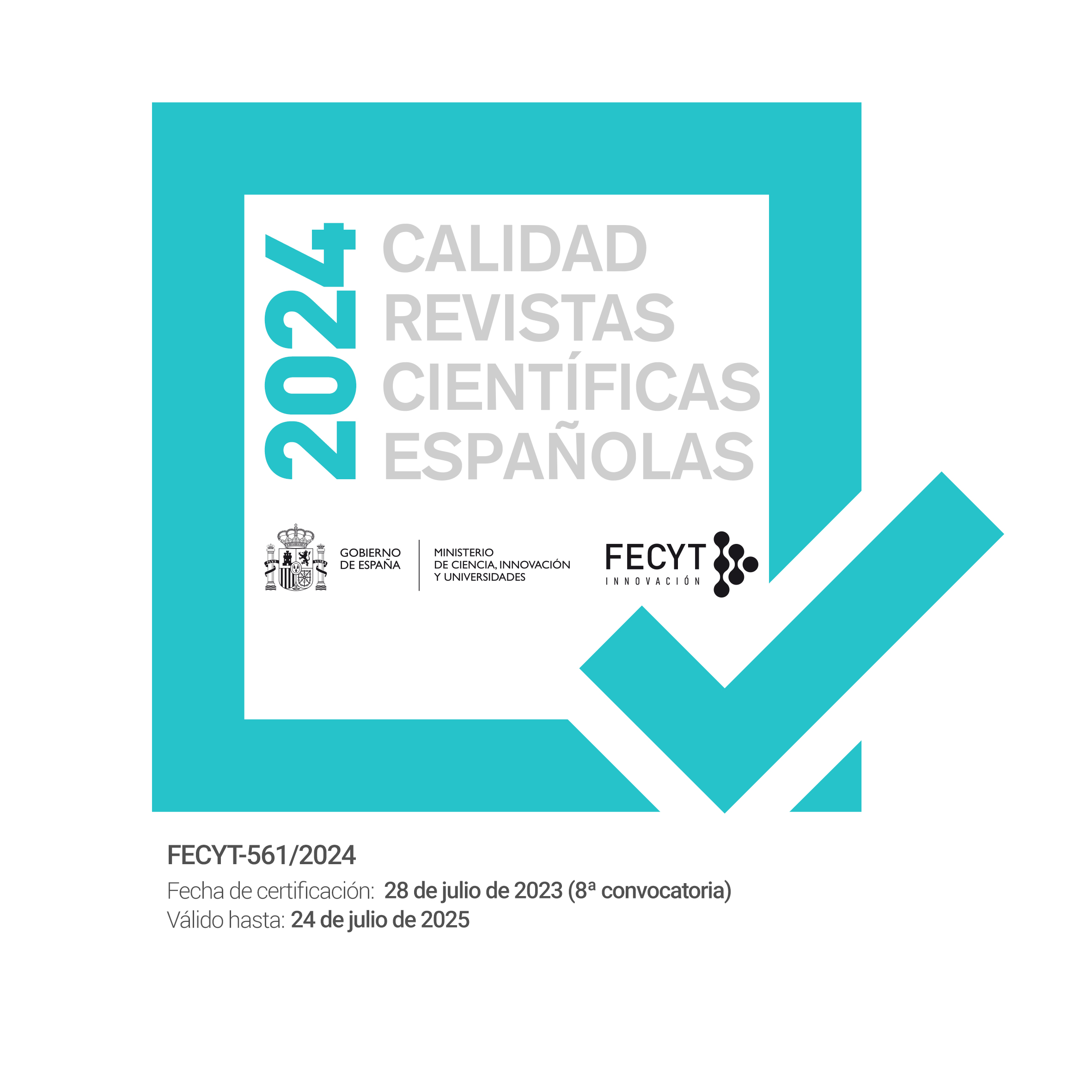Las adaptaciones cinematográficas de la obra de José Echegaray. El gran galeoto (Rafael Gil, 1951)
Palabras clave:
José Echegaray, cine mudo, El gran galeoto, adaptaciones, Rafael Gil. José Echegaray, silent cinema, adaptations, Rafael Gil.Resumen
La obra de José Echegaray no ha conocido una fecunda traslación al cine, ni en los inicios de este arte, ni, en lo que concierne al cine español, durante la dictadura franquista, cuya figura, primer Premio Nobel que recibía un español, era tan respetada. Sí concitó cierto interés durante el cine mudo, donde cabe reseñar las producciones de José Buchs y las adaptaciones de El gran galeoto filmadas en Hollywood. Una de estas películas, Lovers, sirvió de pretexto a Rafael Gil para filmar una nueva versión, donde a la evidente rémora teatral antepuso una cuidada técnica y una sobria realización. The work of José Echegaray has not known a fruitful translation to the movies, at the beginning of this art, even in regard Spanish cinema, during the Franco dictatorship, whose figure, first Spanish Nobel Prize, was so respected. Echegaray attracted some interest during the silent film, where José Buchs’ films and El gran galeoto’s Hollywood adaptations stand out among everyone. One of these movies, Lovers, served as a pretext to Rafael Gil to film a new version, where he put ahead of the obvious theatrical impediment a maintained technique and a sober direction.
Descargas
Citas
AGRAMONTE, Arturo; CASTILLO, Luciano (2003): Ramón Peón, el hombre de los glóbulos negros. La Habana (Cuba): Editorial de Ciencias Sociales.
AMERICAN FILM INSTITUTE (1971): The American Film Institute Catalog of Motion Pictures produced in the United States, F2, Feature Films, 1921-1930. Los Angeles.
ÁVILA ARELLANO, Julián; MENÉNDEZ ONRUBIA, Carmen (1987): El neorromanticismo español y su época. Epistolario de José Echegaray a María Guerrero. Madrid: Consejo Superior de Investigaciones Científicas.
BENTLEY, Bernard P.E. (2008): A companion to Spanish Cinema. Woodbridge: Tamesis.
DE HARO DE SAN MATEO, Mª Verónica (Coord.) (2003): La comunicación a través de la historia. Madrid: Visión Libros.
ECHEGARAY, José (1959): Teatro Escogido. Madrid: Aguilar.
GARCÍA ESCUDERO, José María (1954): La historia en cien palabras del cine español y otros escritos sobre cine. Salamanca: Publicaciones del Cine-club del SEU.
__ (1962): Cine español. Barcelona: Ediciones Rialp.
GARCÍA RIERA, Emilio (1969): Historia documental del cine mexicano: Época sonora. 1945/1948. México: Era.
GARCÍA RUIZ, Víctor; TORRES NEBRERA, Gregorio (2003): Historia y antología del teatro español de posguerra (1940-1945). Madrid: Fundamentos.
GOBLE, Alan (1999): The Complete Index to literary sources in film. Londres: Bowker-Saur.
GÓMEZ MESA, Luis (1977): La literatura española en el cine nacional. Madrid: Filmoteca Nacional.
GREGORI, Antonio (2009): El cine español según sus directores. Madrid: Cátedra.
JIMÉNEZ MADRID, Ramón (1987): El Instituto Alfonso X el Sabio: 150 años de historia. Murcia: Tres Fronteras.
MARTÍNEZ MONTALBÁN, José Luis (2002): La novela semanal cinematográfica. Madrid: Consejo Superior de Investigaciones Científicas.
MESONERO ROMANOS, Ramón (2008): Memorias de un setentón, natural y vecino de Madrid. Tomo II. Barcelona: Crítica.
PEERS, Edgar Allison (1967): Historia del movimiento romántico español. Tomo II. Madrid: Gredos.
PÉREZ BOWIE, José Antonio (2008): Leer el cine. La teoría literaria en la teoría cinematográfica. Salamanca: Ediciones Universidad Salamanca.
PORTER I MOIX, Miquel (1985): Adrià Gual i el cinema primitiu de Catalunya, 1897-1916. Barcelona: Publicacions i Edicions de la Universitat de Barcelona.
POZO ARENAS, Santiago (1984): La industria del cine en España: legislación y aspectos económicos, 1896-1970. Barcelona: Edicions Universitat de Barcelona.
RIAMBAU, Esteve y TORREIRO, Casimiro (2008): Productores en el cine español. Estado, dependencias y mercado. Madrid: Cátedra/Filmoteca Española.
ROMERA CASTILLO, José (2013): Teatro Español. Siglos XVIII-XXI. Madrid: Universidad Nacional de Educación a Distancia.
SOLOMON, Aubrey (2011): The Fox Film Corporation, 1915-1935: A History and Filmography. Jefferson: McFarland.
ULRICH, Paul, S.; DAHLBERG, Gunilla; FASSEL, Horst (2016): Im Spiegel der Theatergeschichte. Berlín: Lit Verlag
Descargas
Publicado
Cómo citar
Número
Sección
Licencia
Ámbitos. Revista Internacional de Comunicación es una revista de acceso abierto, lo que significa que todo su contenido está disponible gratuitamente para el usuario o su institución. Los usuarios pueden leer, descargar, copiar, distribuir, imprimir, buscar o enlazar con el texto completo de los artículos, o utilizarlos para cualquier otro fin lícito, sin solicitar permiso previo al editor o al autor. Esta definición de acceso abierto se ajusta a la Iniciativa de Acceso Abierto de Budapest (BOAI).

A menos que se indique lo contrario, todo el contenido de la edición electrónica se distribuye bajo una " licencia internacional Creative Commons Attribution-NonCommercial-ShareAlike 4.0 ". Puede consultar la versión informativa y el texto legal de la licencia aquí. Esto debe indicarse expresamente de esta manera cuando sea necesario.
En caso de aceptación del manuscrito, los autores ceden los derechos de la obra para su publicación a Ámbitos. Revista Internacional de Comunicación bajo el contrato de licencia Reconocimiento-NoComercial-CompartirIgual 4.0 Internacional (CC BY-NC-SA 4.0). Los autores conservan los derechos de autor y terceros están autorizados a copiar, distribuir y hacer uso de la obra, siempre que cumplan con los términos y condiciones establecidos en la licencia.
- Citar la autoría y la fuente original de publicación (revista, editorial y URL de la obra).
- No los utilice con fines comerciales.
- Si remezcla, transforma o crea a partir del material, debe publicar sus contribuciones bajo la misma licencia que el original.
Se puede encontrar más información en https://creativecommons.org/licenses/by-nc-sa/4.0/deed.es



















